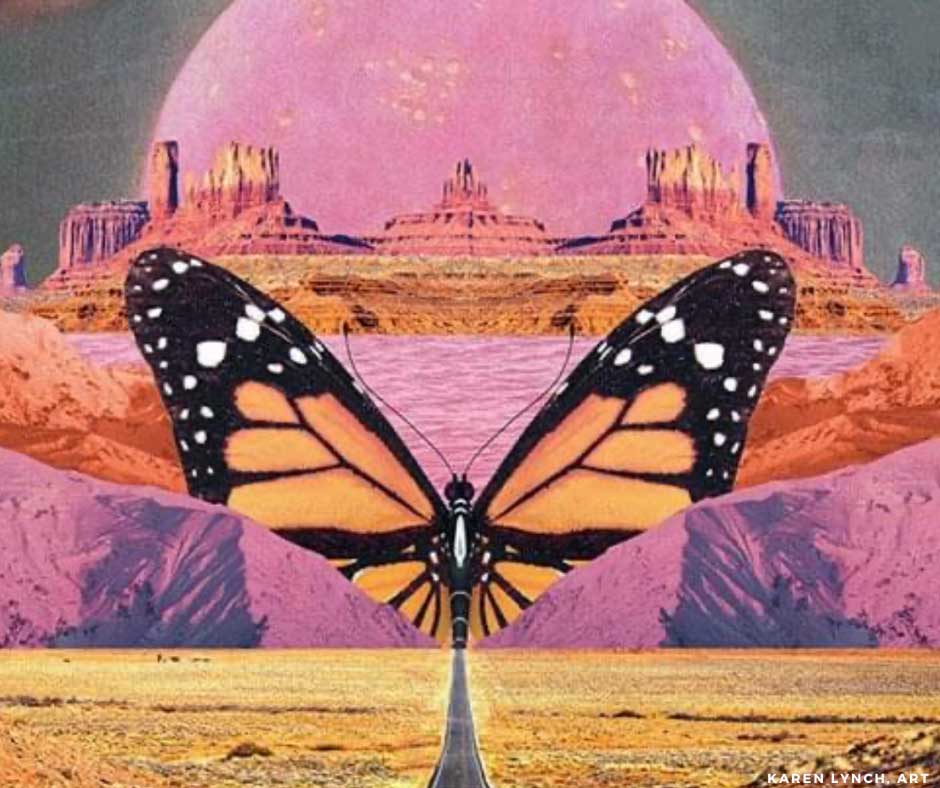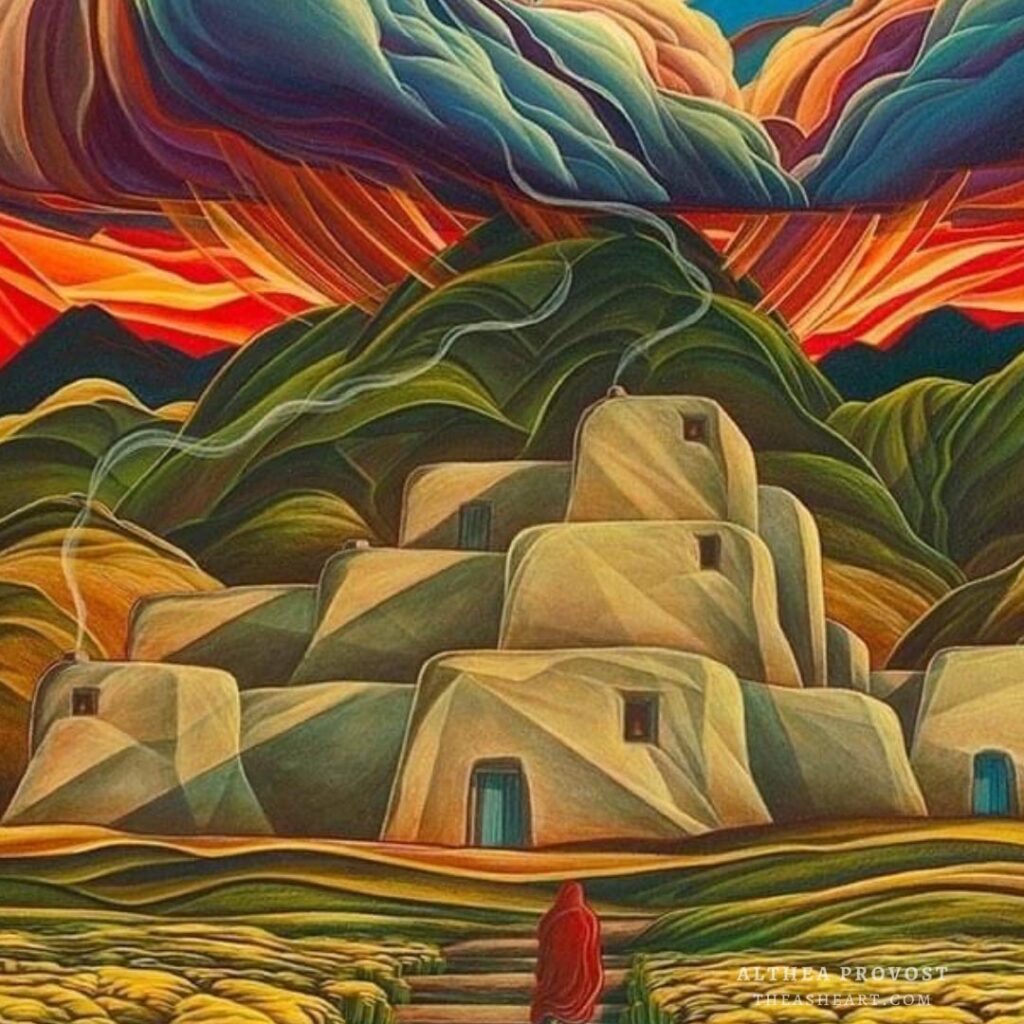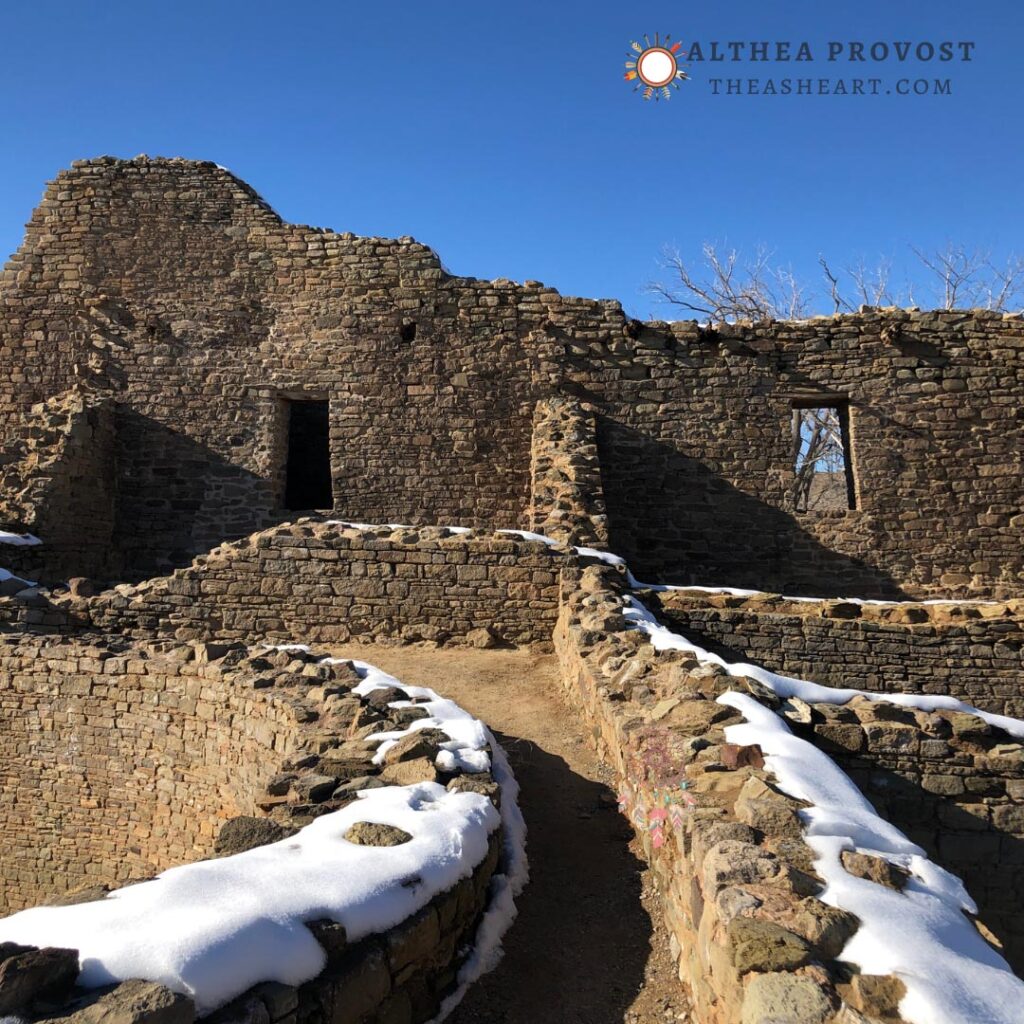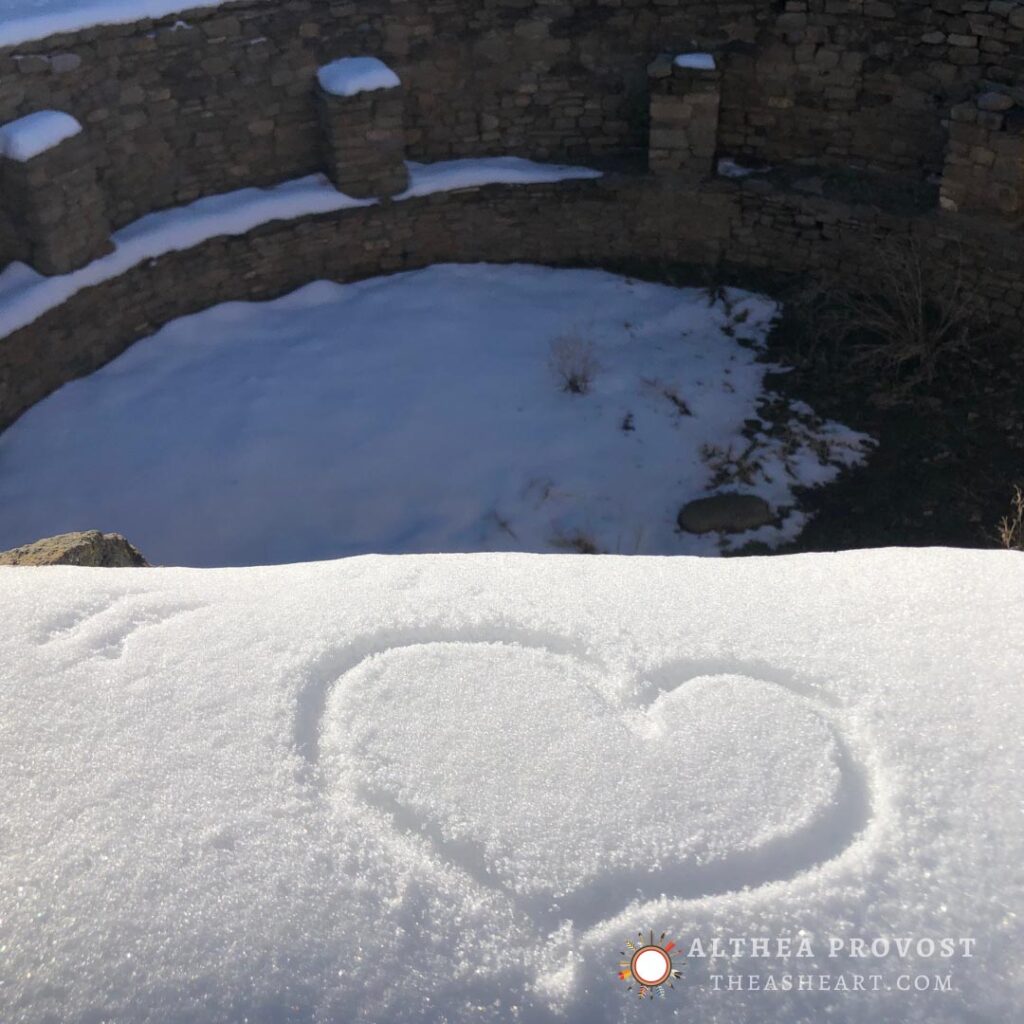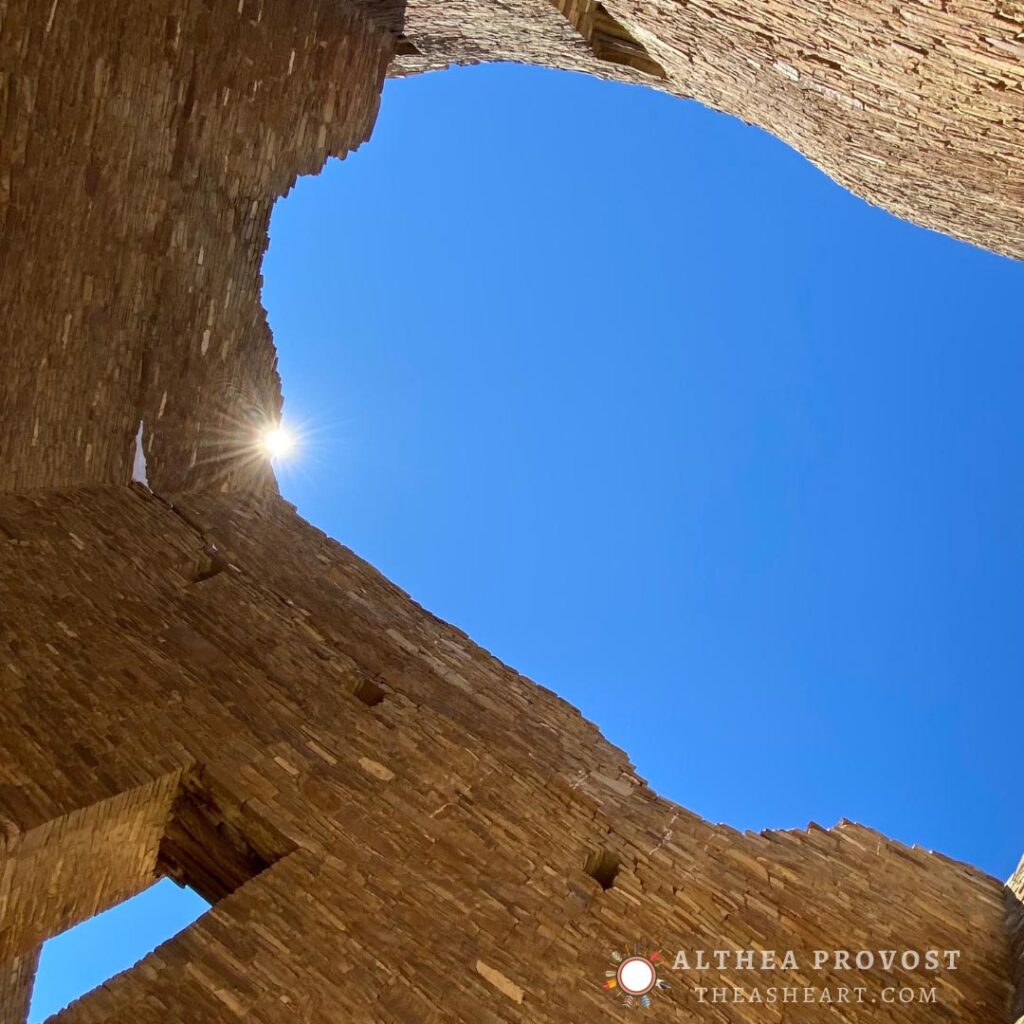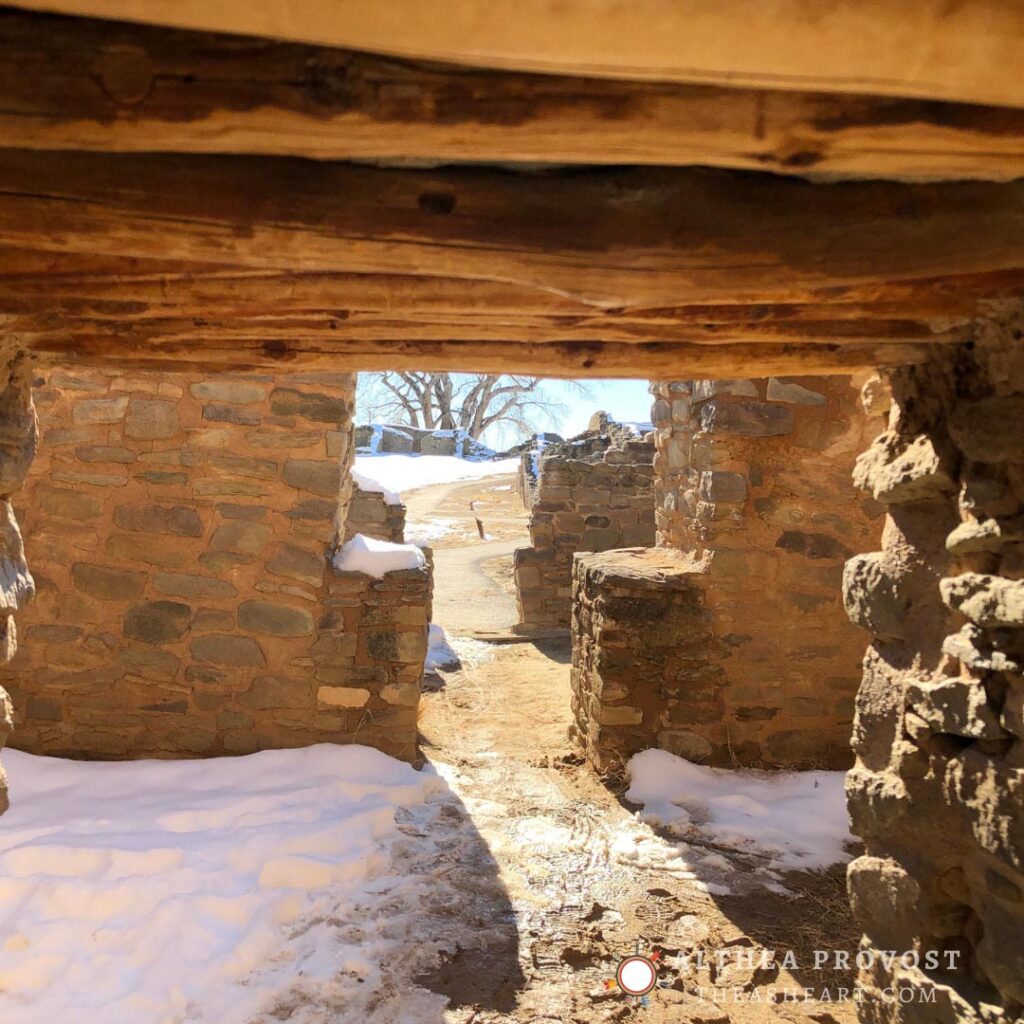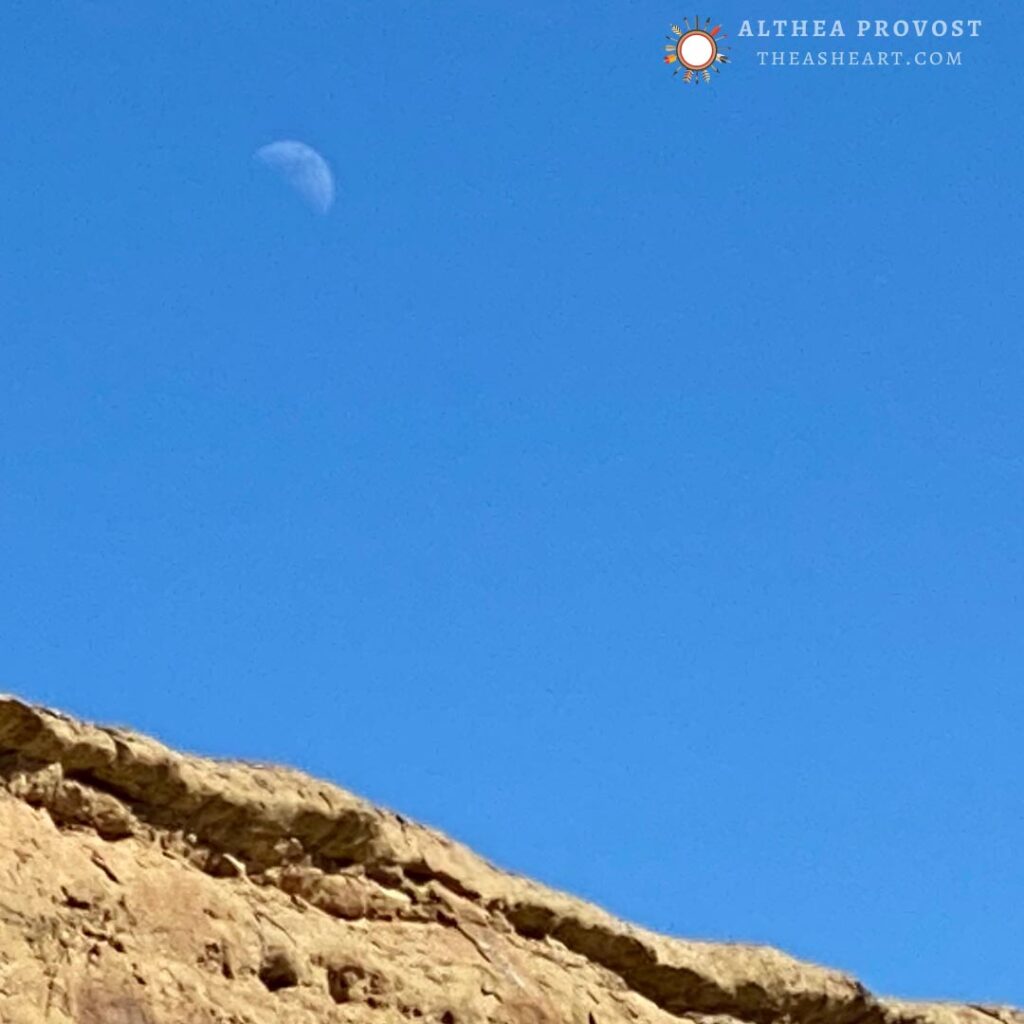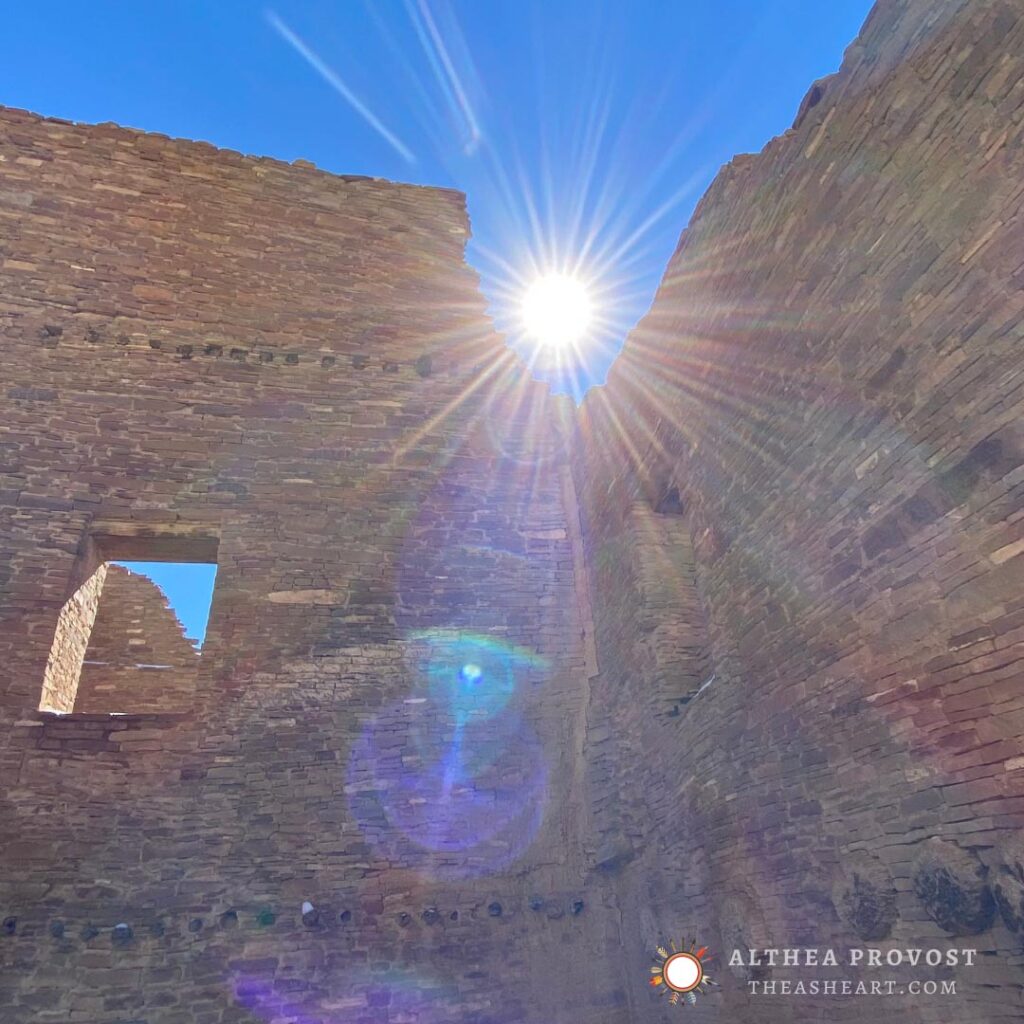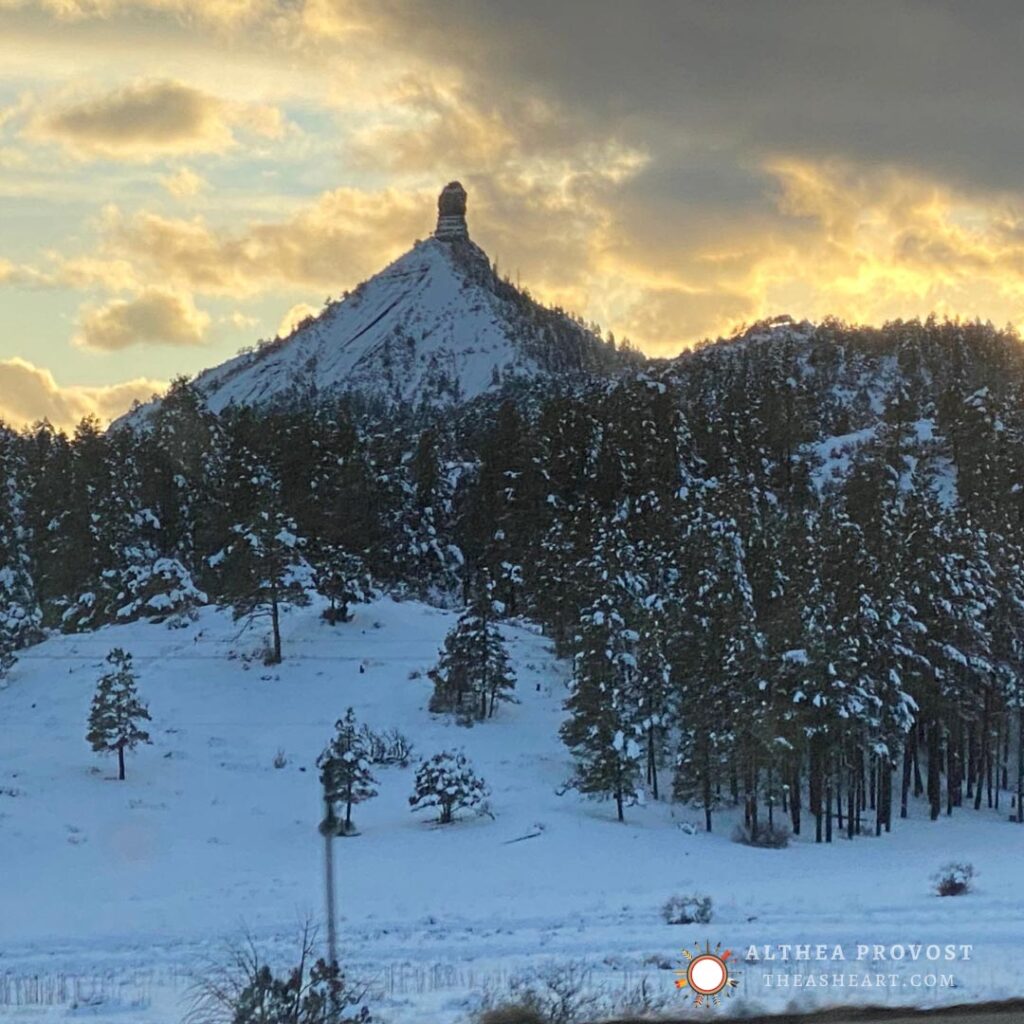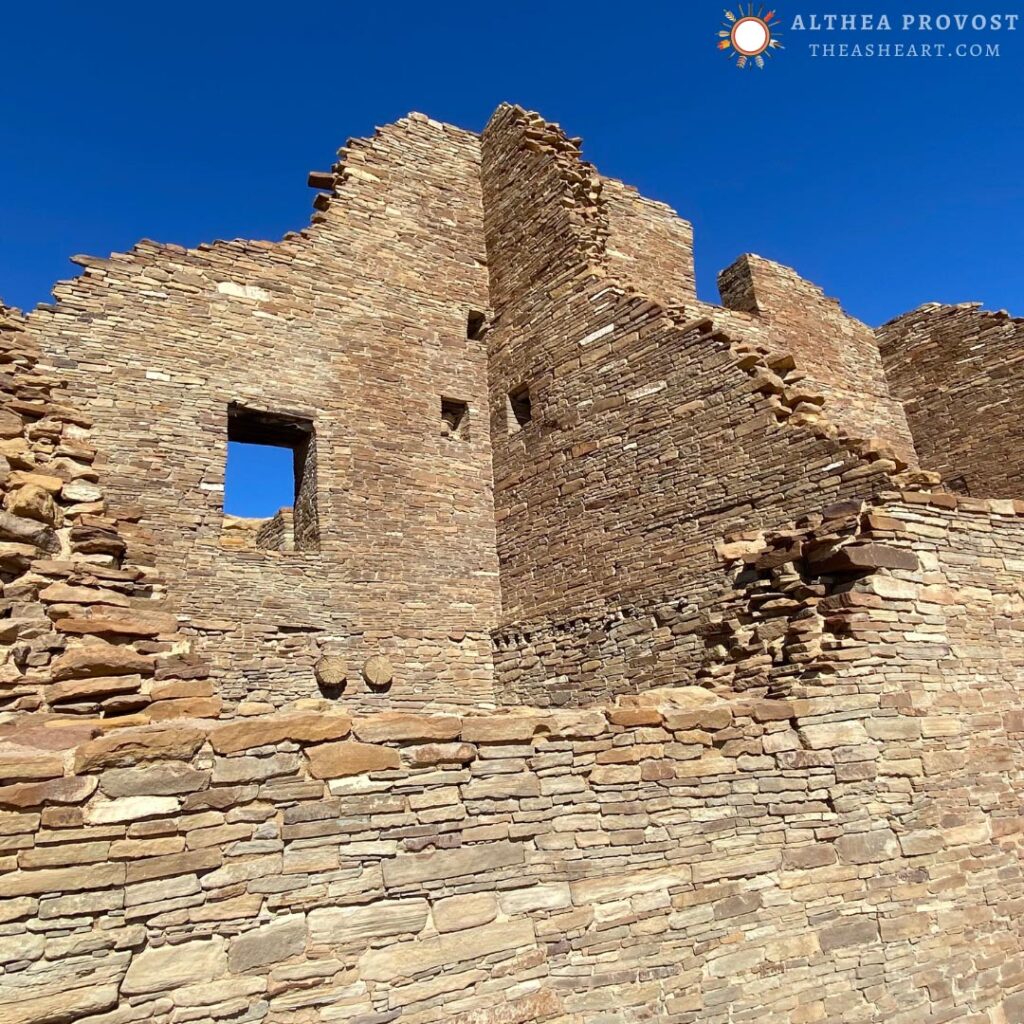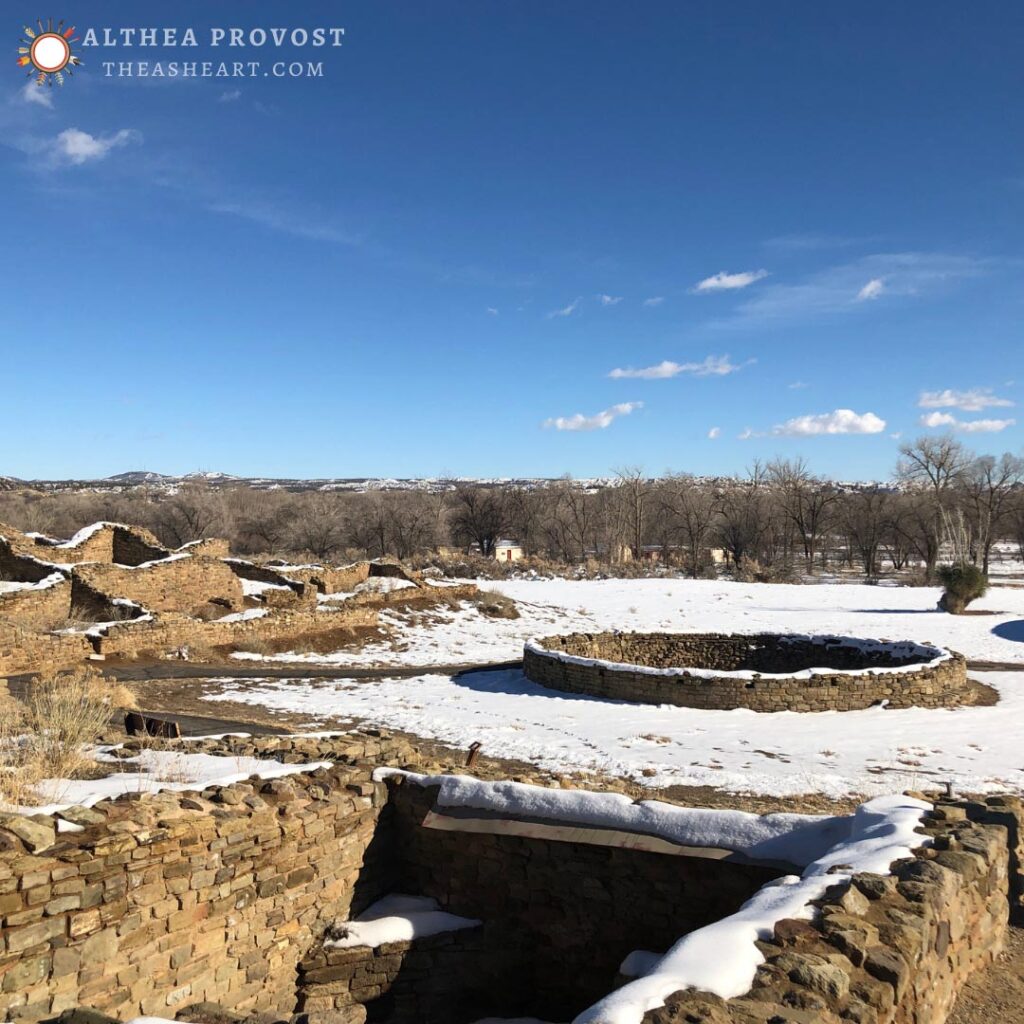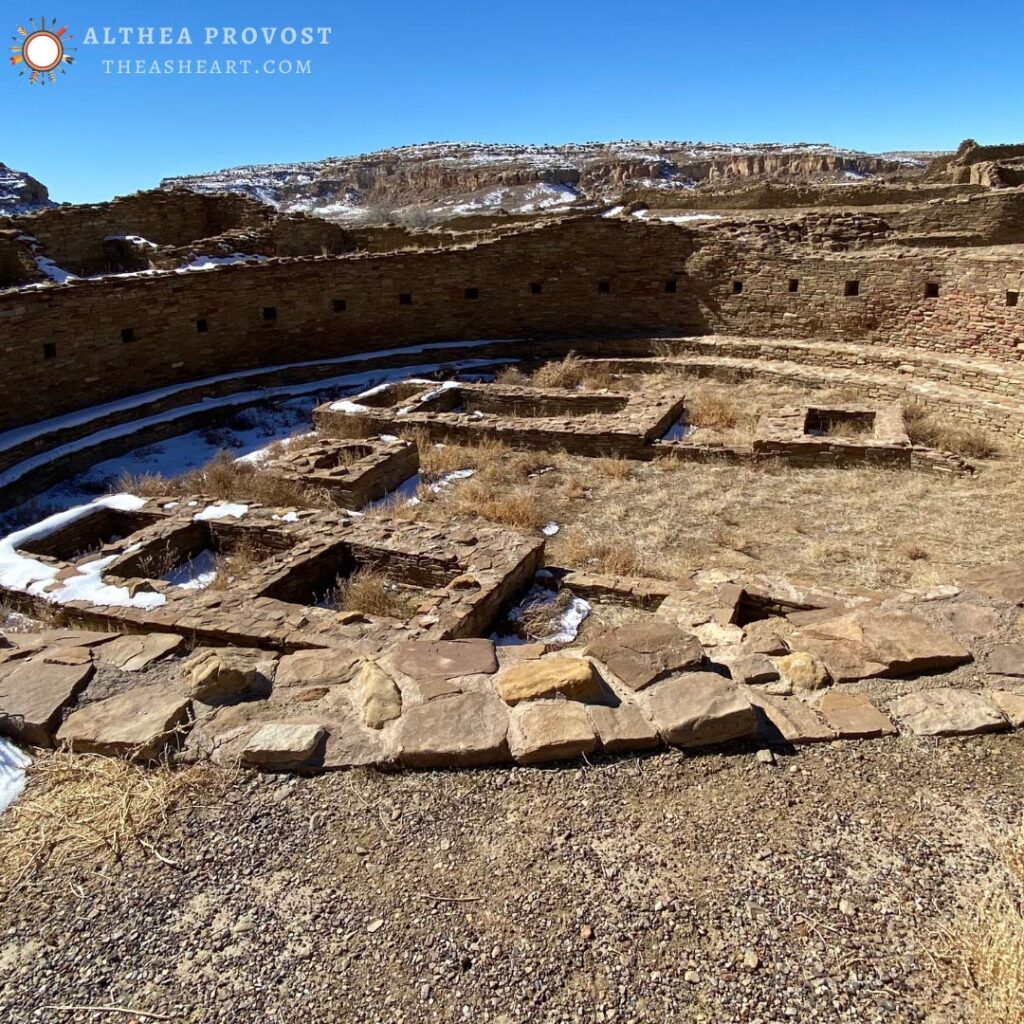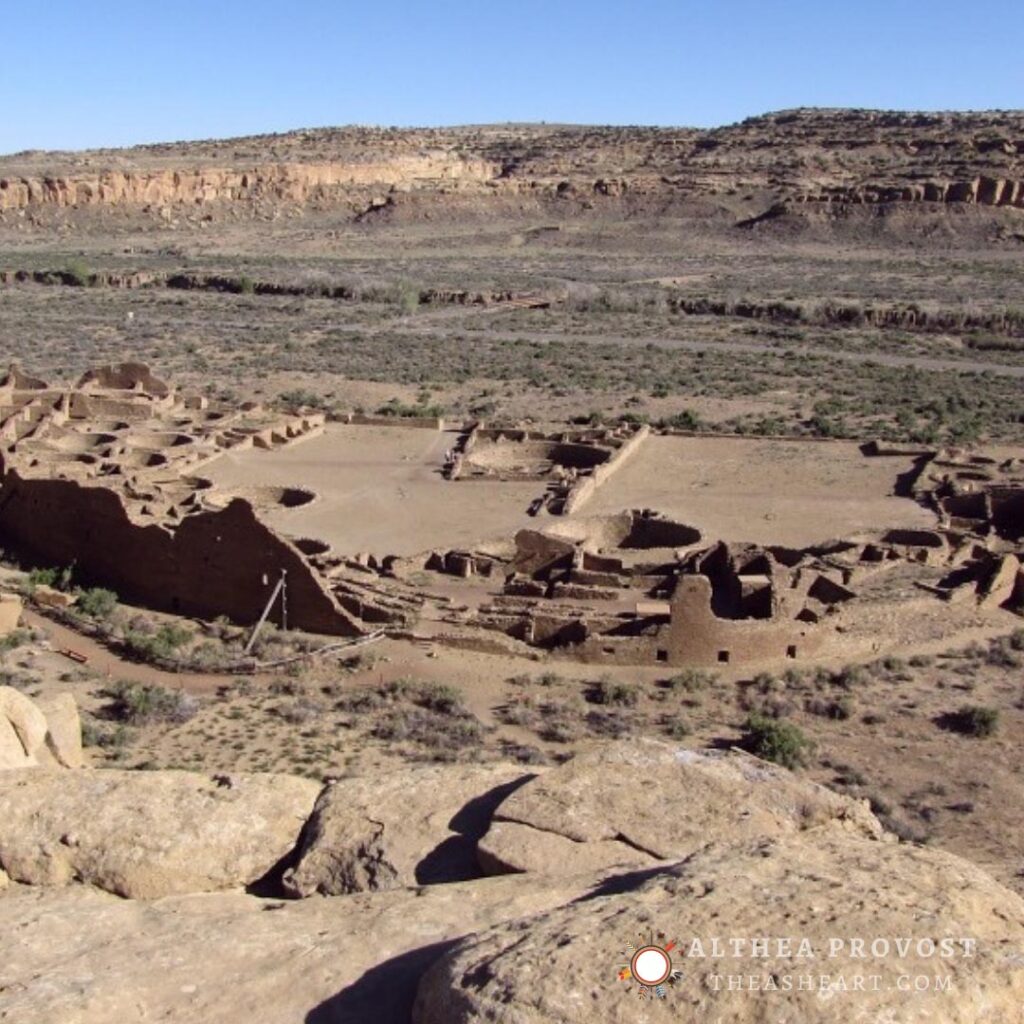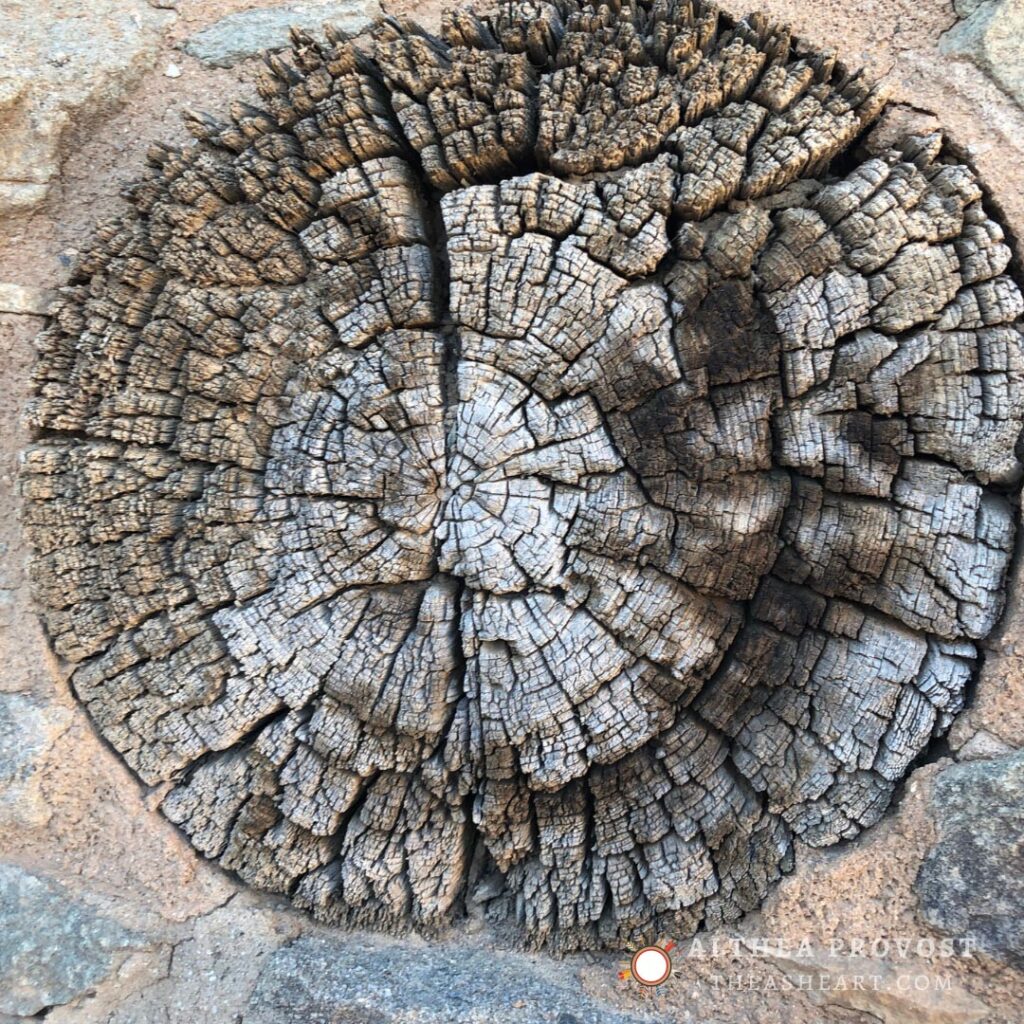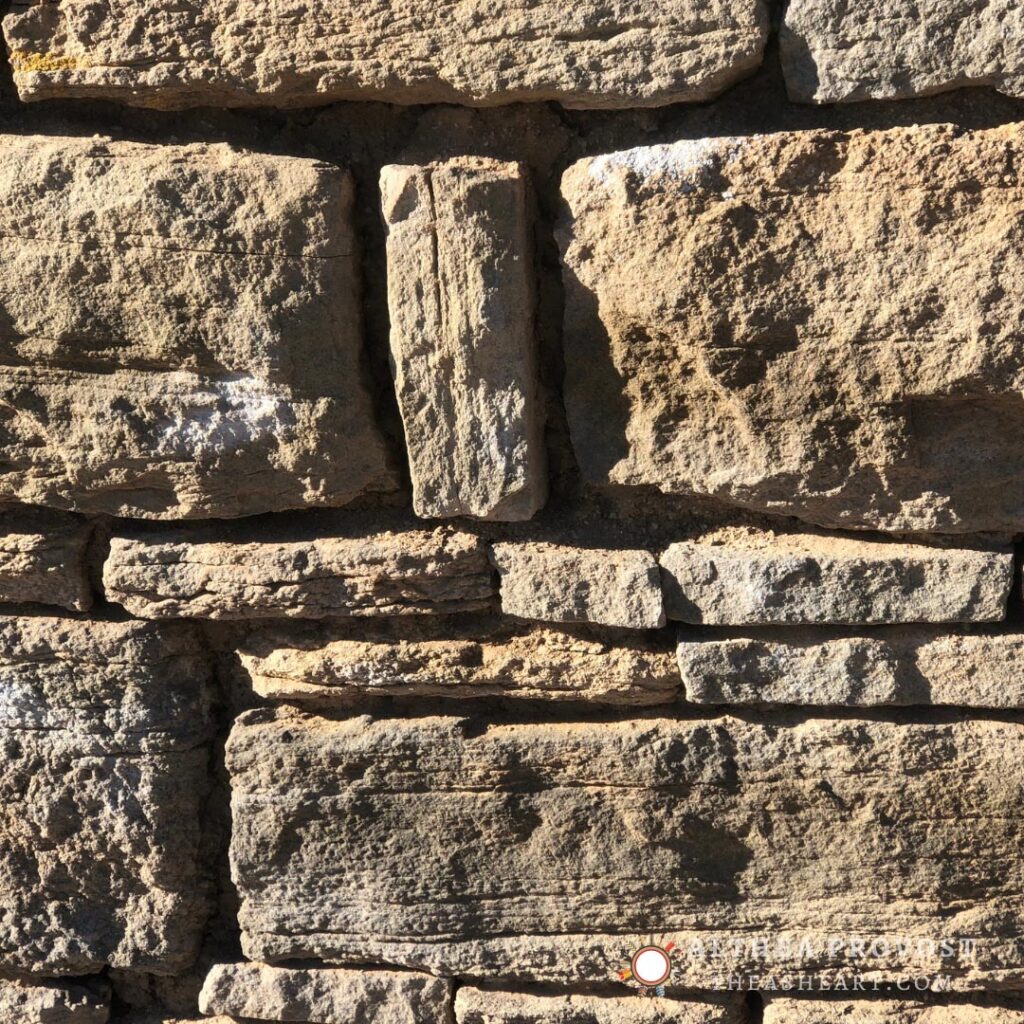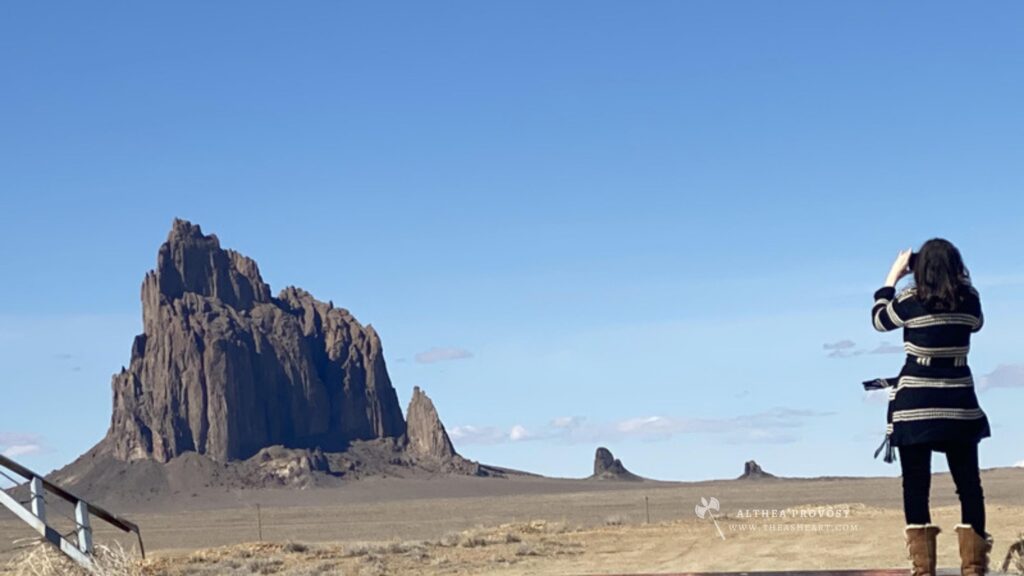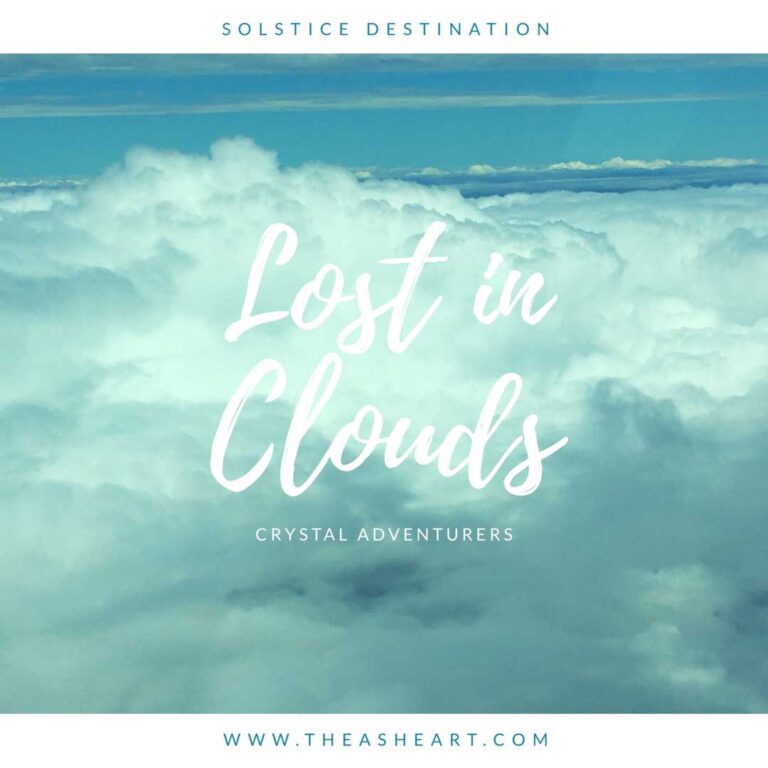When the Stars Align, Go Southwest
SURPRISE ME
As December came and went without any tangible creations to share, behind the scenes, I was working overtime gathering, researching, organizing, and following those synchronistic psychic breadcrumbs so I can eventually share the mystical path with you in a more meaningful and embodied way. My last blog post, Buckle Up Buttercup, touched on how spirit continued to fan the flame for multidimensional experiences, thinning veils between our ancient past and now. Given this, I continued to pull and sort through experiences, seeing where depth could be developed and then, move forward.
On another stove, simmering for four months was my fail-to-launch road trip to America’s Southwest, and with ongoing site closures into January, frustration bubbled within from not being able to produce something so easy as a weekend excursion. As my steamy attitude made its way through my body, my spirit was calmly observing and patiently waiting for my next move. My intention for the giveaway ceremony was to share gratitude and thankfulness for the incredible adventures life has offered me. What is not in my DNA is to approach a sacred site as a punch list item, ticked off and completed. I didn’t know when the stars would align for a favorable journey but without a doubt, I was going. So I handed the agenda over to my spirit, and with the heart of a child, I said out loud, “surprise me.”
By mid-February, the answer suddenly arrived. My husband walked into my office, my head and hands busy with a research project, and said,
“My client just called with an opportunity to meet in Durango,” he offered excitedly, “You should go with me, and afterward, we can see some of those sites you have in mind.”
And just like that, a pathway appeared, and thankfully, in a post-pandemic economy, the majority of expenses were lifted from us. I quickly checked the sites, the Navajo roads and sites were now open but with limited time and services. “I’ll go only if,” I responded tentatively, “after meeting with your client, we agree to no itinerary and no additional hotel arrangements, we just flow.” He willingly agreed. As did his boss, who suggested, “You should take your wife.” With everyone satisfied, a few days later, we set off for a six-hour drive with a client-dinner-meetup in Durango. Along the way, we drove through vast prairies lit by the full sun, experienced snow-showered mountain passes, and audibly gasped at the sight of the setting sun at Chimney Rock.
CHIMNEY ROCK
Chimney Rock continues to impact my heart, each and every time my eyes fall upon it. This high mesa pueblo is an outlier, built between 1086 A.D. and the first half of 1120 A.D. by the ancient Puebloans.1 The construction dates were accurately assessed using dendrochronology, and the preserved Ponderosa pine polls within the kivas had much to say. This remote mesa is built upon bare bedrock made up of sandstone, nestled in a steep canyon making it difficult to reach and with limited resources. Yet, our ancient ancestors began building this site during winter, when snow could be mixed to make adobe mud. Exacting in their reach, and with archeoastronomy precision, the Puebloans could observe the major lunar standstill of the moon between two chimney-like spires. Authors Malville and Putnam described how the ancients were cognizant of the Metonic cycle and that in 18.6 year period, the moon would be between the two spires “for a period of little more than two years.” Here, in the middle of nowhere, these skywatchers built a small village around an ancient celestial clock dedicated to observing and living within the planetary rhythms. Chimney Rock concretized my understanding of how our ancient ancestors created an interlocking web between vastly situated Puebloan mesa sites and star-gazing viewing stations that allowed the synchronistic planetary rhythms to be observed, calculated, and to guide a sustainable life by balancing the sun and lunar calendars. In other words, they were never lost to time. As above so below, or as Hermes Trismegistus said in The Emerald Tablet of Hermes,” That which is Below corresponds to that which is Above, and that which is Above, corresponds to that which is Below, to accomplish the miracles of the One Thing.” Their life and cultural rhythms were planetary-based without an artificial clock or calendar to obscure the view.
DURANGO
We arrived to contactless self-check-in, a canopy of stars overhead, and snow-lined paths as we shuffled our luggage into our cabin and headed back to town for a good meal and insightful conversation. I learned about water buffalos, didn’t see that coming. The following day, my husband left to deliver a presentation at a Durango facility where he would meet his client and a larger group of clients. When he returned, we were an hour and a half away from Shiprock. As we made our way out of town, my husband started to laugh. It turns out his client, who drove five hours to meet with us in Durango, made a mistake: the client meeting was to be held on Zoom. My husband described how he parked his car alongside his client to share a hotspot connection and from their perspective cars, he delivered a Zoom slideshow.
SHIPROCK
We took our time driving through the expansive Navajo Nation. The billboards along the highway spoke to protecting the elders from Covid while the view of austerity was punctuated by simple communities living in white trailers. Shiprock is a town as well as the American name of a sacred site rising within the high-desert plain made from the remains of a massive volcanic formation. In Navajo, it is called “Tse’ Bit’ ai’ or rock with wings.2 We arrived to a site entrance to Tse Bit ai without having an invitation to enter onto private land, the roadside view was enough for me. The wind was strong, the air was crisp, and yet, a deep stillness was present. Without knowing, my husband snapped this photo of me, one of my favorites. We turned around and headed back through the Navajo Nation toward the town of Aztec to walk another mesa site. As we drove, I pondered on what gift I could share that would be meaningful to the Navajo people.
AZTEC RUINS
There is so much to say about this incredible site. The T-shaped doors, the kivas, the building design, and the astronomically aligned construction. Instead, I will leave you with the following:
Walking the ancient path, these places…
Invite all who are present to remember who they are and where they have came from, to remember their relationship to each other and to their ancestors.
To connect to the natural rhythm with the seasons and natural cycles with the cosmos.
Smell the aroma of corn and venison stew simmering in clay pots over a fire of cedar and piñon wood. Feel the presence of the people.3
THE LIVING HOOP
We had a synchronistic adventure in the Southwest, an easy flow. While my giveaway ceremony is private, I will share that black crows gathered above me, circling beforehand, and with permission given, I began my prayer with the crescent moon and sun above, weaving another thread of gratitude back into the living hoop at Chaco Canyon. These ancient Puebloan sites are pristine as we were fortunate to have had panoramic views without crowds. When we returned, we both felt nourished. Full. None of this pushing, striving, stressing, make-it-happen energy. Just in sync with the natural rhythms of the moon, earth, and our spirits. I passed a note to Tim’s client, it read: “We enjoyed ourselves, thank you so much! Can you make more mistakes and invite us?” Tim added to the note, “Can some of your mistakes be overseas?”
1. Malville, J. and Putnam, C., 1989. Prehistoric Astronomy in the Southwest. Boulder, CO.: NetLibrary, Inc., p. 46
2. Discovernavajo.com. 2021. Shiprock Peak | Discover Navajo. [online] Available at: [Accessed 18 February 2021].
3. NPS Aztec Ruins & Chaco Culture. 2021. Trail Marker 18. [online] Available at: [Accessed 18 February 2021].
©2021 Thea’s Heart, LLC™ – All Rights Reserved

